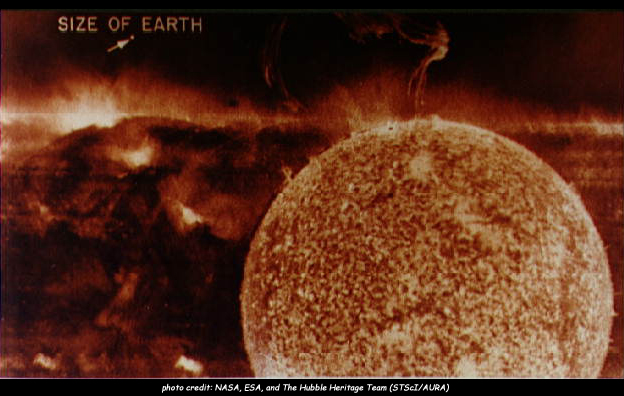

The sun is really just a star. It is 864,900 miles wide (1,392,000 km wide). That makes it 330,000 times bigger than the earth. It is 11,000° F (6,000°C) on the surface. Its spinning force acts like a big magnet. It rotates unevenly creating magnetic fields.
The outer most layer of the sun is called the corona. It is 620,000 miles (1,000,000 km) thick. The 2nd layer of the sun is the chromosphere. It is from here that jets of gas explode off the surface of the sun. The actual physical surface of the sun is the 3rd layer, the photosphere. It is made up of granules of gas bubbles boiling on the sun's surface.
Sometimes sunspots appear on its surface. They are areas of cooler, darker gas. How many sunspots we see varies in an 11-year sunspot cycle.
Loops of the sun's magnetic field sometimes burst into space. They are called prominences.
Gas particles (plasma) escape from the sun’s surface and fly through space gaining speed as they go. This is called solar wind. When it reaches Earth, we are protected from it by our planet's magnetic field. The solar particles that do make it through to reach the earth's atmosphere cause something called auroras, which we can see in the night sky. They can also cause radio and electrical problems on Earth.
The Earth is 93 million miles from the sun.
